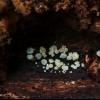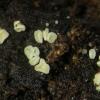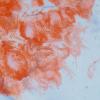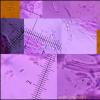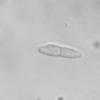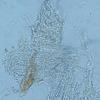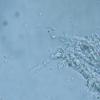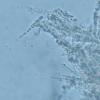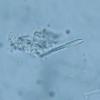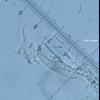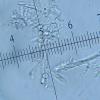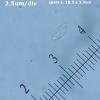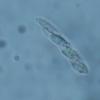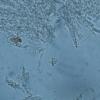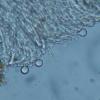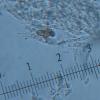
20-12-2025 23:08
Patrice TANCHAUDBonsoir, récolte sur sol sablonneux dans l'arri�

20-12-2025 15:47
Mirek GrycHi.These grew on pine wood that was heavily covere

18-12-2025 21:17
Pol DebaenstThe identification took me to Byssonectria deformi

15-12-2025 07:09
 Danny Newman
Danny Newman
indet. Rutstroemiaceae sp. on unk. fallen leavesMc

19-12-2025 10:10
Patrice TANCHAUDBonjour, récolte réalisée en milieu dunaire, a

18-12-2025 17:23
 Bruno Coué
Bruno Coué
Bonjour,je serais heureux d'avoir votre avis sur c

18-12-2025 18:07
Margot en Geert VullingsThese plumes were found on rotten wood.They strong

17-12-2025 18:35
 Michel Hairaud
Michel Hairaud
Bonjour à tous/Hi to everyone I am passing along
 I found a cluster of tiny ascocarps between 0.3-0.8mm, astipitate, disc to funnel shaped, pale yellow, often with a rim, entire or a bit irregular.
I found a cluster of tiny ascocarps between 0.3-0.8mm, astipitate, disc to funnel shaped, pale yellow, often with a rim, entire or a bit irregular.My problem is that when I checked their micro-features, I only saw a lump of paraphyses (asci? ascospores?)
These were found sitting on decaying branch of a carob tree (I suppose)


So now, I made few other gently squashed mounts straight into congo red, Melzer and Phloxine. I found few spores (fusiform with 1-2 septa, 11-13um long) and hyphae of the excipulum (spherical, c 10um wide) but the asci are difficult to observe. They seem not to stain well and they form tight bundles that do not get loose. In Melzer there is no hint of blue so inamyloid.
I think we are dealing with a Hymenoscyphus sp. and a quick search as "sessile Hymenoschyphus" resulted in H. fagineus which is similar in some aspects but not the habitat ! Hymenoscyphus fructigenus is also a close match although usually, it is stipitate but on EOL I saw sessile forms (if ID is correct?)

>> Apothecia pale to ochraceous yellow, sessile to shortly stipitate. Excipulum at least basally with isodiametrical cells.
and then Table 7 :
>>>> Apothecia not reddening when damaged. Paraphyses with low refractive guttules or eguttulate. Spores ciboroid, cylindrical to fusiform.
What would you say if I suggest Phaeohelotium immutabile (Fuckel) D (= Hymenoscyphus immutabilis ) ?
In the meantime, in IKI I saw these hyphae with swollen rounded ends slightly J+.

I cannot identify with only dead elements.

But: in vivo you have these strongly refractive vacuoles in the paraphyses which totally disappear in any lethal mountant, or even when you put a flame under the slide. These VBs are very important to identify the genus. In this case it points to the genus Calycina which typically has these VBs.
Now you say nothing about the substrate. I assume it is woody (looks so). To identify a Calycina needs info about
- ascus apex reaction in IKI
- croziers
- living mature asci in order to see if the spore septation occurs there or perhaps only in overmature spores
- living mature (not overmature!) spores to see the guttulation.
Your sample seems to be somewhat overmature, or immature because of frost. Then it ist difficult to identify.
Zotto

Thank you so much for the lecture. I have printed the page and put it in my notes. The specimen was collected on a decaying branch presumingably of a carob tree (at least there were carobs growing there) located in a damp area and which I collected Thursday 23rd November. The specimen spent a day on the table at room temp (22 deg C) and 3 other days in a humid chamber at 18C. It was Monday that I examined it with stains.
Under the stereo microscope, the ascocarps looks healthy. There are some individuals which seem young (right hand side of pics above) and subturbinate (not disc shaped) but that may still make them overmature.
I agree that I can't find typical asci with spores and that puzzled me for long, but now I know why. I will give another try on the youngest individuals, but what i can do is to leave the branch in a humid chamber at room temp (or outdoors) and perhaps I would get a second wave of growth.


